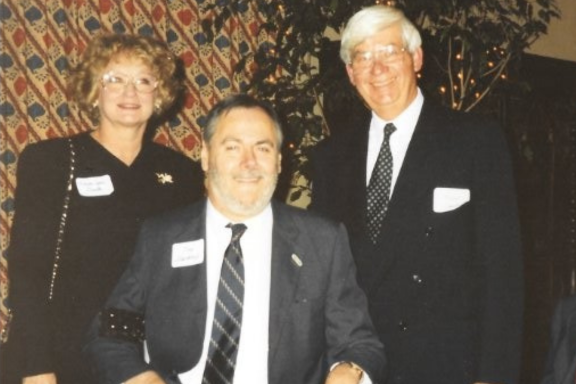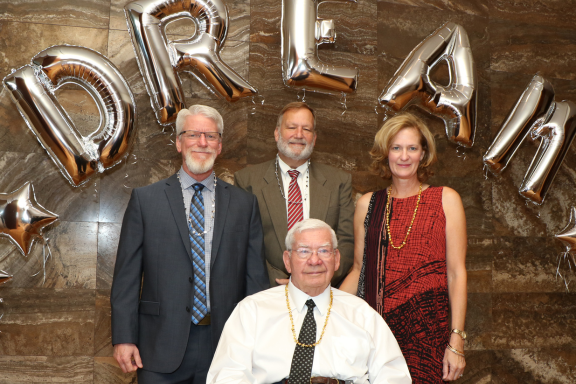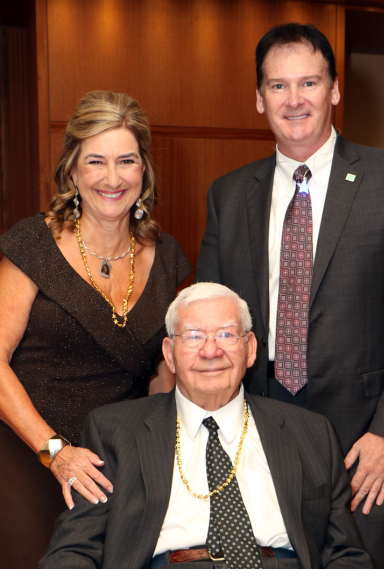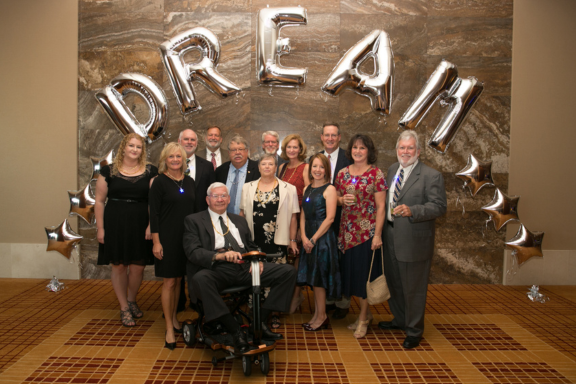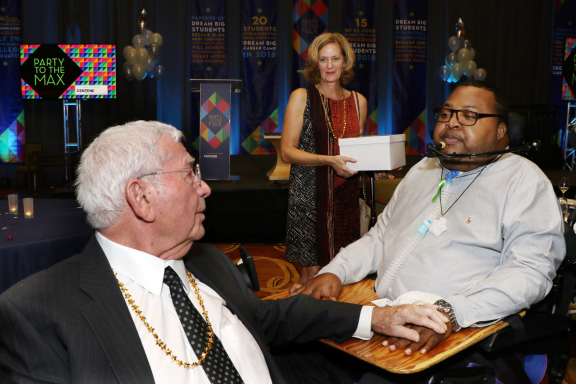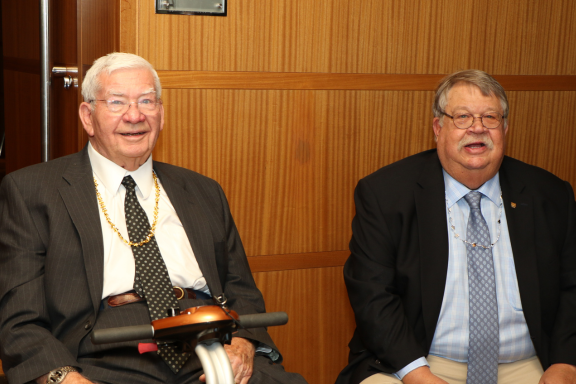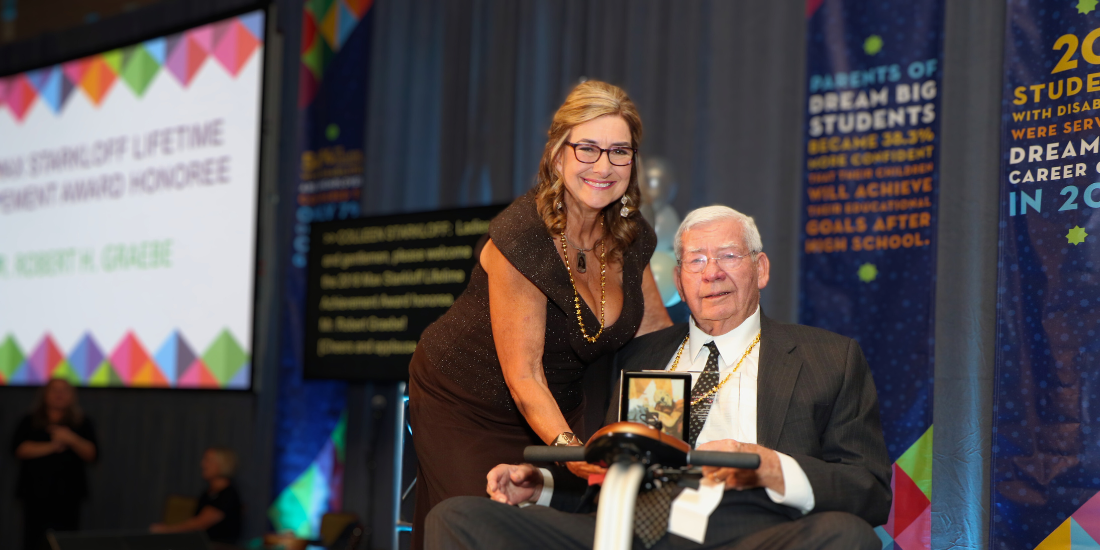
Robert H. Graebe: Honoring His Life and Legacy
Mr. Graebe “literally saved my butt” and millions more.
This week, we join a global community in mourning the loss of an extraordinary innovator and compassionate problem-solver: Robert H. Graebe, inventor of the ROHO cushion and recipient of the 2018 Max J. Starkloff Lifetime Achievement Award.
Bob, a close friend of SDI founders Max and Colleen Starkloff, passed away earlier this week, leaving behind a legacy that has profoundly changed—and saved—millions of lives around the world.
Bob Graebe wasn’t a doctor or a clinician. He was an electrical engineer with a rare blend of curiosity, empathy, and persistence. In the late 1950s, while working at McDonnell Douglas on a blood analysis equipment project, he encountered something that deeply disturbed him: people were being hospitalized, even dying, due to pressure injuries (decubitus ulcers, or bedsores) simply because their bodies, as wheelchair users, were in sitting position for extended periods. It wasn’t just a medical issue to Bob; it was a human problem that needed a better solution.
So he got to work.
For nearly two decades, Bob spent nights and weekends in his basement workshop experimenting with ways to relieve pressure on the body. He wasn’t looking for recognition, he just wanted to help. In 1973, after years of testing, learning, and perfecting, he launched ROHO, the company that would become a global leader in pressure injury prevention. (The name “ROHO” comes from the way Bob signed off on paperwork and projects, R.H. Graebe, taking the first two initials and stylizing the periods as little Os. It’s a quiet signature on every cushion produced.)
The technology Bob developed, dry flotation, was revolutionary. By mimicking the pressure-equalizing properties of water using interconnected air cells, ROHO cushions distribute weight evenly, adapt to movement, and protect skin integrity in a way no other product had before. Today, over a million ROHO cushions are in use in more than 70 countries, empowering people with disabilities to live fuller, healthier, and more independent lives.
The Starkloffs Meet Bob Graebe
As Colleen Starkloff recounted when presenting Bob with the eponymous Max J. Starkloff Lifetime Achievement Award in 2018, the cushion had life-changing implications for Max, who grappled persistently with dangerous pressure sores.
Colleen first met Bob in 1973, when she was a student physical therapist and he came to her hospital demonstrating a new cushion he believed could prevent pressure ulcers and the life-threatening infections that often resulted. She was amazed, but didn’t know anyone (yet!) who needed it. Later Colleen began working in a nursing home where she met the love of her life, Max Starkloff. At a doctor’s appointment about Max’s ongoing battle to prevent and recover from pressure sores, the doctor said they had tried everything on the market, and nothing had worked for Max. All his doctor had to offer was someone in Belleville developing cushions that might be of some help. Colleen remembered the demonstration from her student days and found Bob, who said “C’mon over!”
Colleen went to Bob’s home, met his wonderful wife, Norma Jean, and kids and came away with a ROHO cushion and instructions on how to adjust it for Max. Bob simply gave them the cushion, but wanted feedback on how it worked for Max. Well, initially, it didn’t. So, Bob, Max, and Colleen became good friends while Bob tried to figure out how to make the cushion work for Max. And he did just that! Max and Colleen were then free to think about marriage, a job, a family and a future. In Colleen’s words, “I do not exaggerate when I say that Bob Graebe saved Max’s life.”
But the real measure of Bob’s impact isn’t just in numbers. It’s in the lives he touched.
For many wheelchair users and bedridden individuals, the ROHO cushion has meant freedom from life-threatening infections, freedom to travel, to work, to play sports, to start families, and to build meaningful lives. As one longtime user put it, “I truly believe he saved my life. If I didn’t have a ROHO, I probably would have died of a terrible infection years ago.”
Another shared, “It allowed me to live my life to the fullest: travel, participate in sports, have an active social life, a successful career, and build a family.”
And yet Bob remained humble. He once said, “I never really wanted any recognition… I like to be the guy behind the guy.” His quiet dedication makes his accomplishments more powerful.
Bob’s invention not only changed the course of medical technology, it created jobs, supported families, and inspired a movement of innovation with heart. From its beginnings in East St. Louis to its current home in Belleville, Illinois, ROHO has grown from a handful of handmade cushions to a team of over 230 employees producing thousands of products every week. And through its acquisition by Permobil in 2015, the mission Bob started continues to expand.
But Bob’s impact didn’t end with ROHO’s commercial success. As Colleen noted, Bob remained deeply invested in understanding and addressing the root causes of pressure injuries. He challenged traditional thinking, proposing that pressure doesn’t cause a decubitus ulcer. Instead, he believed it was about blood flow and tissue deformation. He never stopped trying to find a better solution for the millions of people still at risk from these injuries, maintaining “it is a failed engineering solution, not a failed medical problem.” Bob helped fund ongoing research at Georgia Tech to better educate clinicians, therapists, and at-risk individuals on these critical insights.
To this day, ROHO cushions remain the industry standard in skin and soft tissue protection, supported by more than 90 clinical studies. But more importantly, they represent one man’s unwavering commitment to the dignity, comfort, and independence of others.
Bob’s impact didn’t stop with innovation. He was also a longtime leadership donor and passionate champion of the Starkloff Disability Institute’s mission. His generous support directly empowered people with disabilities to live full, independent lives through careers they loved. Bob believed in a world where everyone could contribute their talents and thrive, and he put that belief into action.
The Max J. Starkloff Lifetime Achievement Award honors those who dedicate their lives to the emancipation, empowerment, independence and quality of life of people with disabilities. As Colleen said when presenting the award in 2018, “Bob Graebe has done that in spades.”
As we reflect on Bob Graebe’s life, we honor not just his brilliant mind but his generous heart. Thank you, Bob, for your vision, your persistence, and your profound impact.
You didn’t just invent a cushion—you gave people their lives back.

